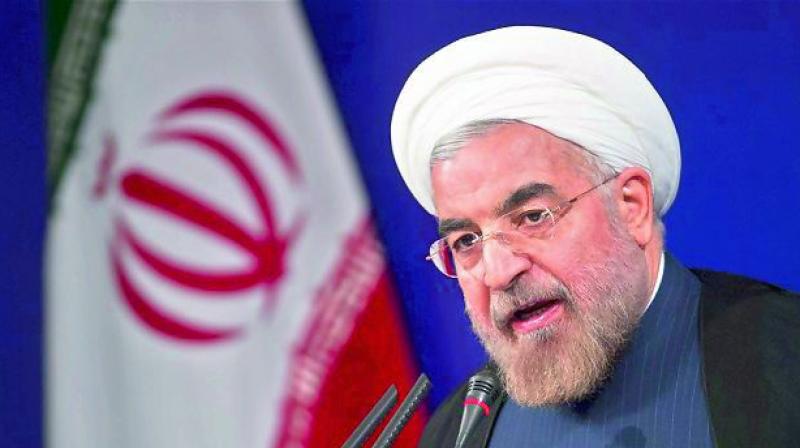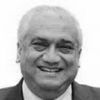Persian Spring' rattles Tehran, won't shake it
Unlike 2009, when the demonstrations began from Tehran, now the agitations are from smaller provincial centres.

In circumstances strongly reminiscent of the Arab Spring uprisings seven years ago, popular demonstrations have swept across Iran over the past week, with the agitators expressing deep-seated anger at their economic plight and robustly condemning their leaders and the political order headed by them.
On December 28, a local cleric in the holy city of Mashhad urged the populace to come out on to the streets to protest about rising prices. The crowds responded enthusiastically and shouted: “No to high prices” and “Death to Rouhani”. And, then it got out of control: demonstrations spread to other Iranian towns, so that in five days over 50 towns had been affected, including Tehran, the capital.
The slogans too got more political and strident; now they included “Death to the Dictator” (a reference to Supreme Leader Ayatollah Khamenei); “Death to the Revolutionary Guards”; “People are paupers, while mullahs live like gods”; “Independence, Freedom, Iranian Republic”, and “We don’t want the Islamic Republic”.
In Qom, Iran’s holiest city, some demonstrators even recalled the ousted Shah of Iran, the Pahlavi dynasty’s founder, saying: “Reza Shah, bless your soul”. In some cases, slogans also criticised Iran’s foreign forays, such as “Leave Syria alone; do something for us” and “Neither Gaza nor Lebanon, my life for Iran”.
Initially, the State’s response was restrained, with the security forces using water cannons to disperse the demonstrators. President Hassan Rouhani upheld the Iranians’ right to protest, saying that they were “absolutely free to criticise the government”. But later, when public properties were attacked, harsh action was taken, which has left about two dozen dead, while hundreds have been arrested.
Ayatollah Khamenei blamed the “enemies of Iran” who were using their “money, weapons, politics and intelligence services” to attack the Islamic Republic. Ali Shamkhani, secretary of the Supreme National Security Council, accused foreign powers — Saudi Arabia, Israel, the United States and Britain — of directing a “proxy war” against Iran to “collapse the nation from within”.
As in the case of the Arab uprisings, the social media has played a key role in mobilising the demonstrators. In contrast to the 2009 agitations, when 2-3 million Iranians had smartphones, today 48 million have these devices, with social media and communication apps; the app Telegram, which has 40 million users, was the principal mode of mobilisation.
The key factors driving the anger are almost identical to those that propelled the Arab Spring — unemployment, inflation and rampant corruption. Unemployment in the country is 12.5 per cent, but is much larger among young people. Inflation has been brought down from a high of 40 per cent in 2013 to about 10-12 per cent, but the cost of certain essential food items remains high: consumption of bread, milk and meat has decreased between 30-50 per cent over the last decade.
The standard of living of Iranians has deteriorated by about 15 per cent in the last 10 years, leaving at least 14 million, out of a total population of 81 million, living in absolute poverty. Popular anger has been intensified by the experience of rampant corruption. On the social media, the agitation has been dubbed the “movement of the hungry”.
The economic policies pursued by President Rouhani have aggravated popular discontent. Since his election in 2013, he has presented austerity budgets, focusing on privatisation, tax reform, limited public spending, and encouragement to foreign direct investment. But Mr Rouhani’s policies have crashed against the realities of the Iranian order made up of inefficient state enterprises, cronyism and corruption.
While earlier, the economy was stymied by the sanctions regime, now, after the nuclear agreement, it has been adversely affected by the visceral hostility of the Trump administration, along with its threat to withdraw from the agreement and reimpose sanctions. This has discouraged expansion in trade and foreign investment, which had been envisaged by Mr Rouhani as key benefits after the nuclear agreement to promote employment.
Not surprisingly, unlike the middle-class agitators of the 2009 uprising who were protesting about vote fraud, this time the demonstrators are from the working class, but also include pensioners, government and private sector employees affected by rising prices, persons who lost their savings in dubious unlicensed savings schemes, and unemployed youth. Again, unlike 2009, when the demonstrations began from Tehran, now the agitations are from smaller provincial centres, with only limited involvement of Tehran.
As against a few million who had come out on to the streets in 2009, the total number now is a more modest 20,000-30,000. As in the case of the Arab Spring, they are also without any leadership or a cohesive political agenda. However, the most important feature of the ongoing agitation is that now the demonstrators are demanding, not a reform of the system, but a wholesale rejection of the clerical order. Observers have noted that the present generation is more radicalised and “doesn’t recognise any limits… There is no space for appeasement in the current demonstrations”.
There is little likelihood that the Islamic Republic will experience regime change as a result of these agitations, however enthusiastic and fervent they might be, largely due to the coercive power available with the state order. But the anger of the populace is real and very deep.
It affirms that the “business-as-usual” approach of the clerical leadership, and the division of spoils of state assets amongst its constituents, is viewed as illegitimate and unacceptable, and the extraordinary authority enjoyed by unelected leaders, with lifetime appointments, is an anachronism that has no place in contemporary Iran.
In 2011, Iranian media commentator Narges Bajogli had noted that the officers of the Iranian Revolutionary Guards Corps were aware that “the youngest generation in our country doesn’t understand our religious language any more”, and had then decided to focus on nationalism as the instrument to define the Iranian republic.
This nationalism will ensure that, even if the present upsurge fails, the days of the present order, described colourfully by Ahmad Sadri as a “melange of procedural democracy and obscurantist theocracy [with] a tiny democratic heart”, are numbered.

